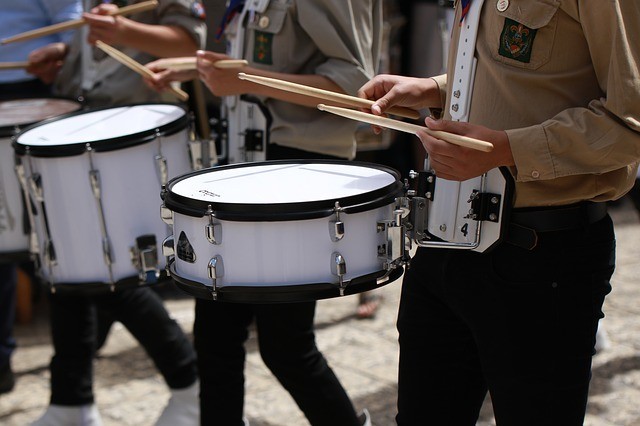
5 Keys To Mastering The Double Stroke Roll
Today we’re going to talk about mastering the double stroke roll. I have found in my teaching experience that developing a good double stroke roll is one of the most difficult tasks for many students. After all these years of teaching, i still don’t feel that there are any shortcuts. It simply takes a lot of time and patience to master. It definitely helps though, if you practice correctly and efficiently.
Here Are 4 Keys To Mastering the Double Stroke Roll
1. Practice at various dynamic levels. This includes very soft, along with a medium dynamic level. It also includes practicing very loud. Practicing at various dynamic levels will give you more control of the roll. this will help you play smoother and faster.
2. Practice double stroke rolls every single day. This rudiment is the foundation for many of the other rudiments. It’s used in every style of drumming so it’s well worth the time. Practicing double strokes just 10 minutes every day will result in tremendous improvement over several weeks time.
3. Use your fingers along with you wrists to play the roll. This will result in a stronger roll.
There are various exercises and methods for increasing finger control. Here is one of my lessons about developing your fingers for drumming.
Another thing I have my students do is practice the roll with various grips. The most efficient grip for the double stroke roll is the matched grip, with all the fingers on the drumstick. But a good exercise is to play the roll while taking various fingers off the stick. Try taking your pinkies off. Then try taking your ring and middle finger off. Next try taking off your index finger and thumb.
Then practice again with the complete matched grip. Practicing this way will give you more control over the sticks by making you more aware of how your fingers are gripping the stick. You’ll also become aware of the times you’re unconsciously playing with one or more fingers off the stick.
4. Practice with a metronome at all speeds. Start by practicing quarter notes. When practicing at extremely slow speeds you will actually be doing 2 single strokes, rather than a double stroke with each hand. Practice loud as full-strokes and half-strokes.
As you get faster, you’ll be playing two 8th notes with each hand, then eventually 16th and 32nd notes. Again, note that at slow speeds you’re actually playing 2 controlled single strokes with each hand. As you get faster, you will start getting 2 bounces with each hand. Practicing at all these different tempos with result in a strong and controlled roll.
5. Strive for 2 equal volume strokes with each hand. Many teachers believe in having students accent the second stroke of a double stroke roll. I believe this is misleading to a student trying to master the roll.
First of all I’d like to say that I don’t believe that practicing this way is a waste of time. If you practice any type of accents with the fingers it will improve stick control. Improving stick control results in a cleaner, more powerful roll. So by all means, practice accents to improve your roll.
However, if you’re trying to achieve a fast and clean double stroke roll, after a certain speed, you need to eliminate the accent from the second stroke. You need to throw the stick and allow it to bounce twice. Trying to accent the second stroke actually gets in the way because you aren’t allowing the stick to bounce.
Therefore, I teach students to simply practice their double stroke rolls as 2 strokes per hand with equal volume. I save the accents for separate exercises.
